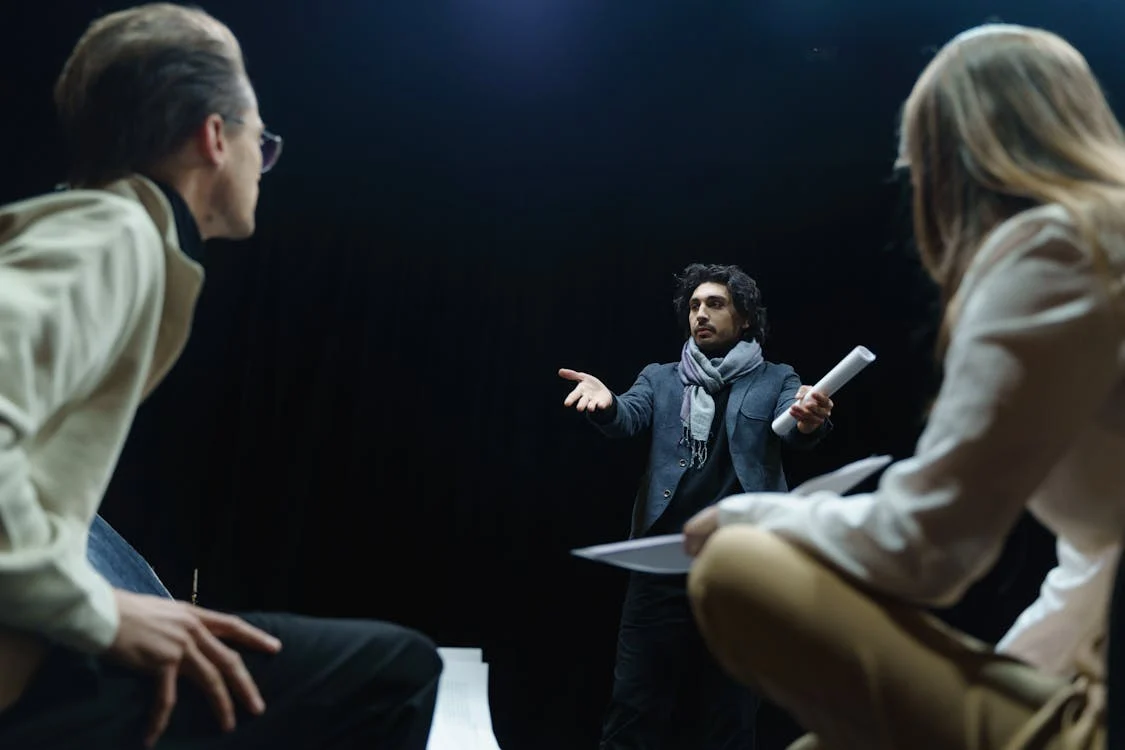What is the Meisner Door Exercise?
This exercise is a practical and powerful tool for actors
(By Tia McMullen)
 (Photo: Pixabay/Pexels)
(Photo: Pixabay/Pexels)
The Meisner technique, created by American actor and acting teacher Sanford Meisner, focuses on building an actor’s emotional truth and spontaneity. One of the fundamental exercises in this technique is the “Meisner Door Exercise.” This exercise is a practical and powerful tool for actors, helping them connect emotionally to a scene, strengthen their focus, and respond instinctively to stimuli around them.
Understanding the Meisner Technique
Before diving into the specifics of the door exercise, it’s important to understand the philosophy behind the Meisner technique. At its core, Meisner’s approach emphasizes living truthfully under imaginary circumstances. Instead of relying on intellectualization or overthinking, actors are encouraged to react naturally and truthfully to the present moment.
RELATED: How long does it take to learn Meisner?
Meisner believed that acting should be about doing, not thinking. By focusing on your scene partner or your environment, you shift your attention outward, allowing your responses to be authentic and in-the-moment. The ultimate goal is to free actors from self-consciousness and give them tools to respond instinctively.
The Meisner Door Exercise: Overview
 (Photo: Cottonbro | Pexels)
(Photo: Cottonbro | Pexels)
The Meisner Door Exercise is an exploration of preparation and spontaneity. It’s designed to help actors learn how to enter a scene with emotional truth, motivated by an immediate task, and be open to whatever happens next.
In the exercise, an actor prepares to enter a room, and behind the door is another actor, their scene partner. However, what makes this exercise interesting is that the actor must create a specific emotional or psychological reason for entering the room—this is known as “independent activity.”
Steps in the Meisner Door Exercise
Preparation
Before approaching the door, the actor must create a strong reason for why they are entering the room. This reason should be emotionally engaging and personal. It could range from something as simple as needing to confront someone to an urgent task like finding a lost object. The key is for the actor to truly believe in their reason.
The Independent Activity
While entering, the actor needs to be occupied with an activity that holds personal importance. This activity acts as a form of preparation and grounds the actor in something immediate and concrete. For example, they might be looking for something they’ve lost or bringing important news to the person inside. This task must have a real sense of urgency and emotional weight, heightening the stakes of the moment.
RELATED: What is the Meisner Object Exercise?
Knocking on the Door
The actor knocks on the door and waits for their scene partner to answer. The person inside the room is usually another actor who is also prepared with a reason for being in the room. The moment the door is opened, the exercise truly begins.
Living Truthfully in the Moment
Once the door opens, the actor must deal with whatever situation they encounter. Their task is to stay emotionally connected to their preparation while responding naturally to their scene partner’s actions, tone, and emotional state. No matter what happens—whether it aligns with the actor’s expectations or not—the actor must remain truthful and reactive, allowing their emotions to flow organically.
Spontaneous Interaction
The door exercise emphasizes Meisner’s core principle: the ability to respond honestly to what your partner is giving you. Whether the person inside the room reacts in a friendly, hostile, or neutral manner, the actor must adjust their behavior accordingly while staying connected to their original reason for entering. This back-and-forth is the essence of the exercise, teaching actors to let go of predetermined responses and act truthfully in the moment.
Purpose of the Exercise
 (Photo: Cottonbro | Pexels)
(Photo: Cottonbro | Pexels)
The Meisner Door Exercise serves several key purposes:
Emotional Preparation: It trains actors to emotionally invest in their character’s objectives before even entering the room. This creates authenticity from the very beginning of the scene.
Instinctive Reactions: By focusing on a strong objective and responding truthfully to what’s in front of them, actors learn to trust their instincts, rather than relying on scripted or rehearsed responses.
Improvisation: This exercise encourages spontaneity and the willingness to react to unforeseen circumstances. Whether the person behind the door is calm or emotional, friendly or aggressive, the actor must adapt in real-time.
Concentration on Task: The independent activity forces the actor to focus on something concrete, preventing them from overthinking or becoming self-conscious. This shifts their focus away from performance and into action.
Benefits for Actors
Emotional Truth: The exercise teaches actors how to enter a scene fully present and emotionally available, making their performance more grounded and believable.
Listening and Reacting: Since much of the Meisner technique revolves around listening and reacting truthfully, the door exercise reinforces these skills, allowing actors to build stronger connections with their scene partners.
Removing Self-Consciousness: Actors are required to focus on their objective and the independent activity rather than worrying about how they appear, helping to eliminate self-consciousness and promoting more natural performances.
Flexibility: The unpredictable nature of the scene partner’s responses helps actors become more adaptable. This adaptability is essential in acting, as it allows performers to adjust their behavior according to the needs of the moment, even if it’s not what they initially expected.
The Meisner Door Exercise is a staple in actor training for good reason. It teaches emotional preparation, spontaneity, and how to live truthfully under imaginary circumstances—essential skills for any actor looking to deepen their craft. The next time you’re preparing for a scene, think of the door exercise as a tool to open up new dimensions of truth and depth in your performance.



